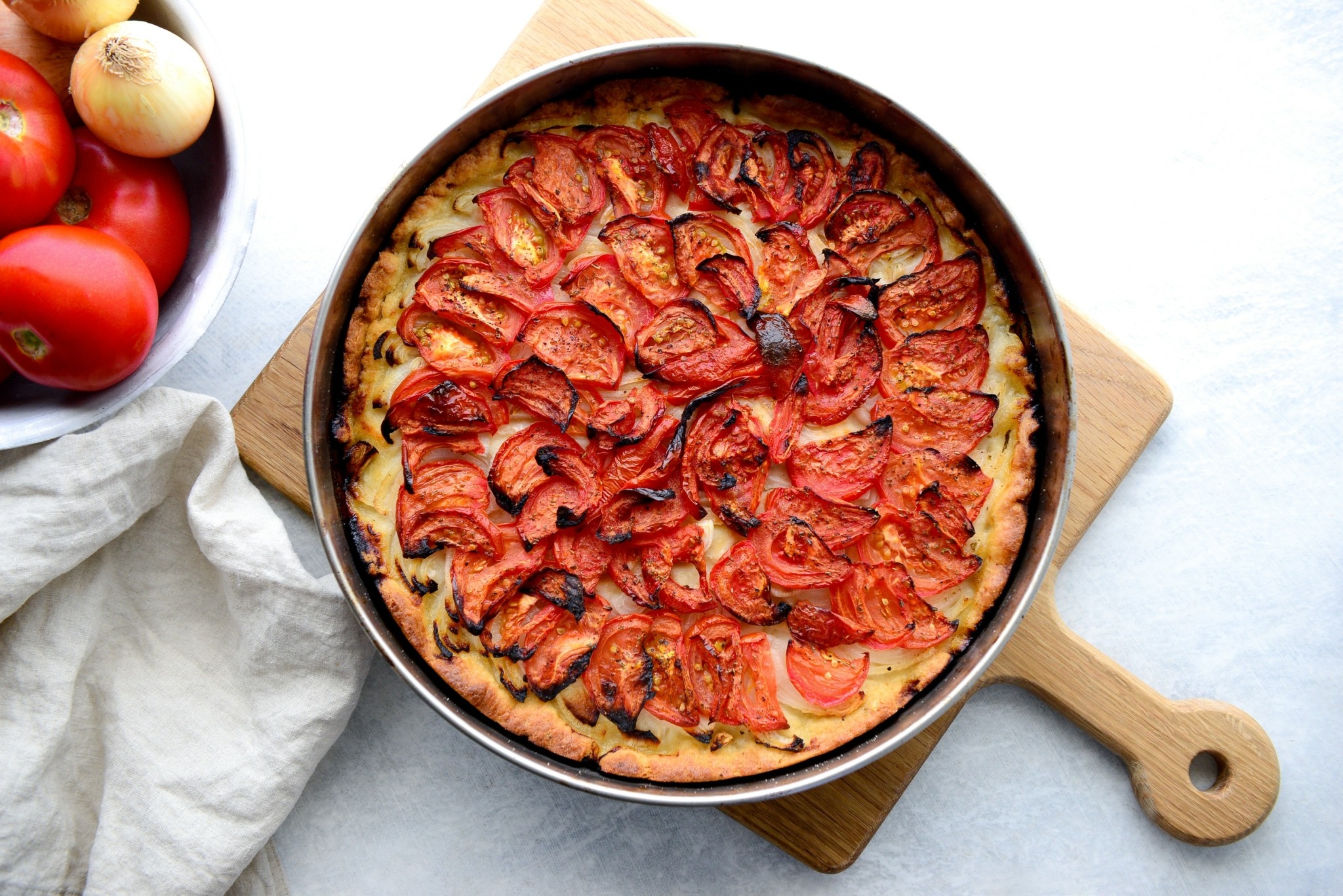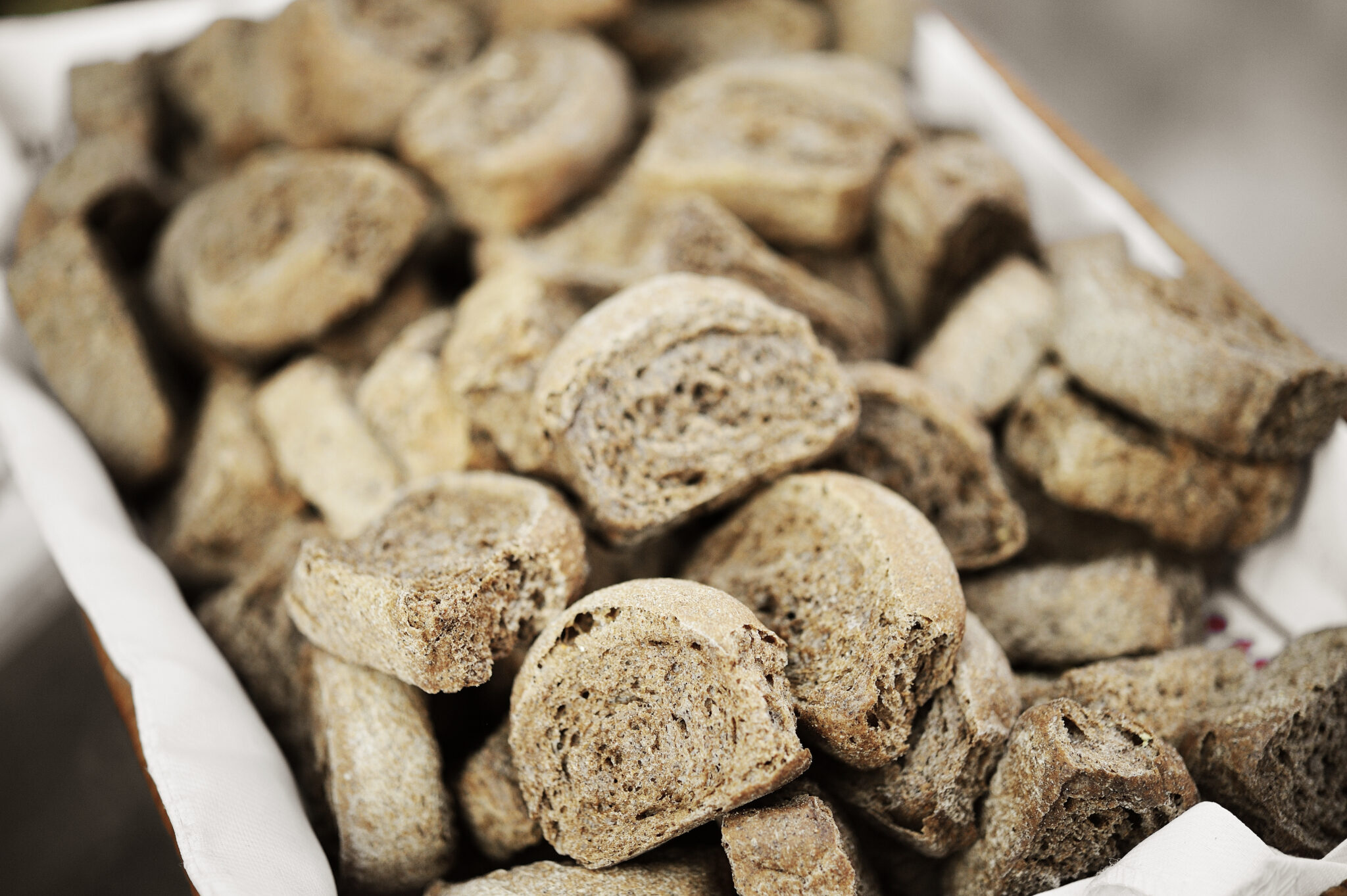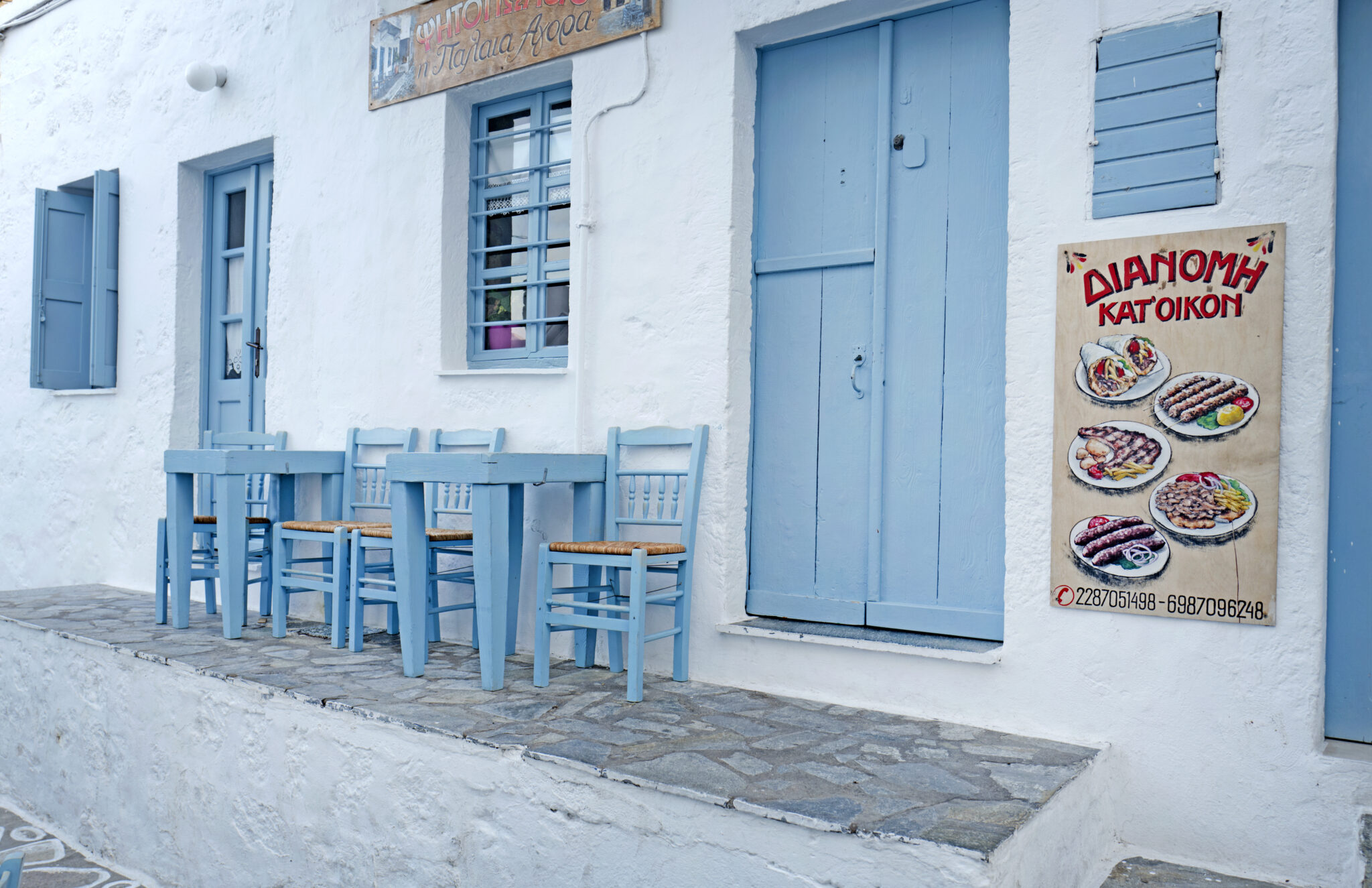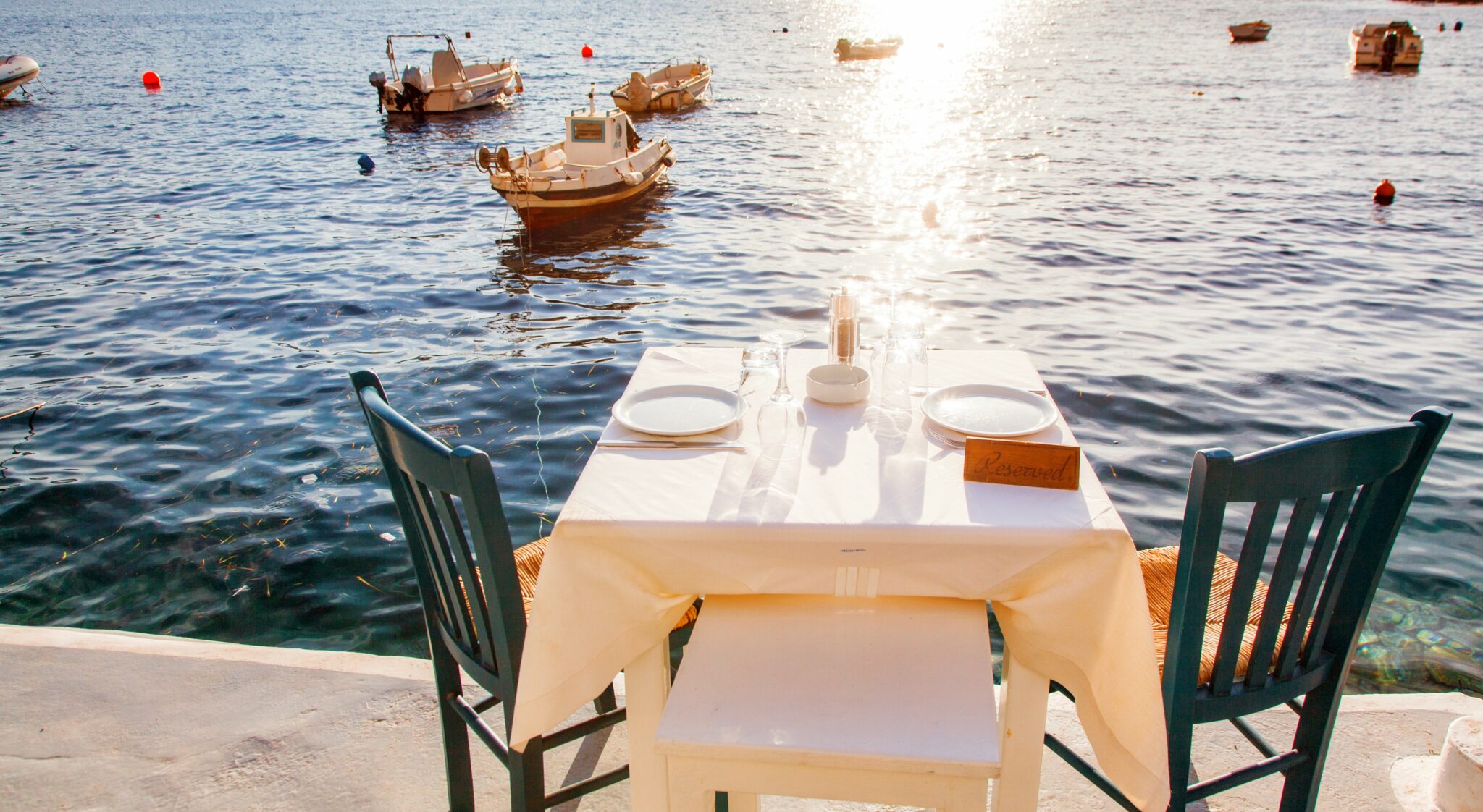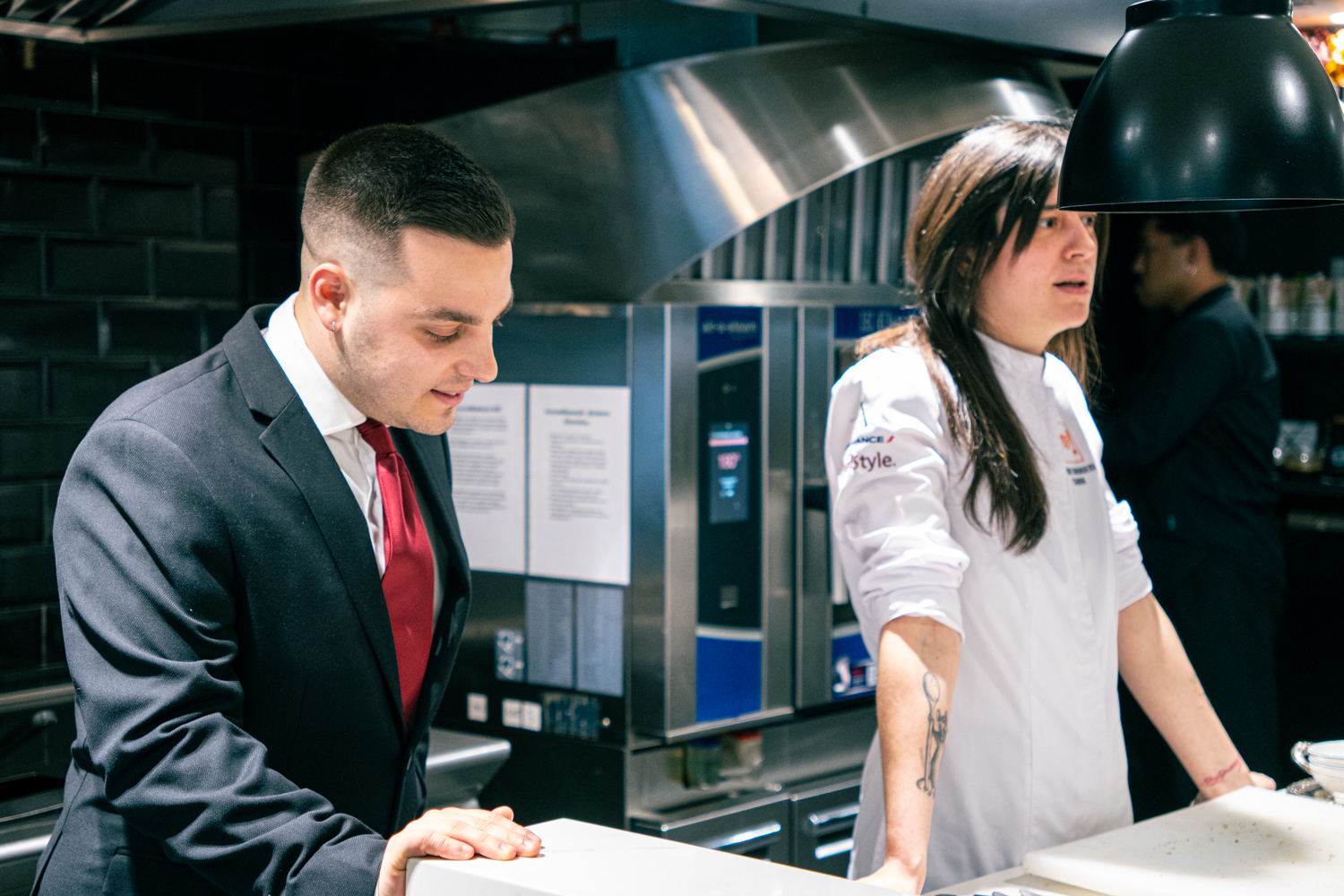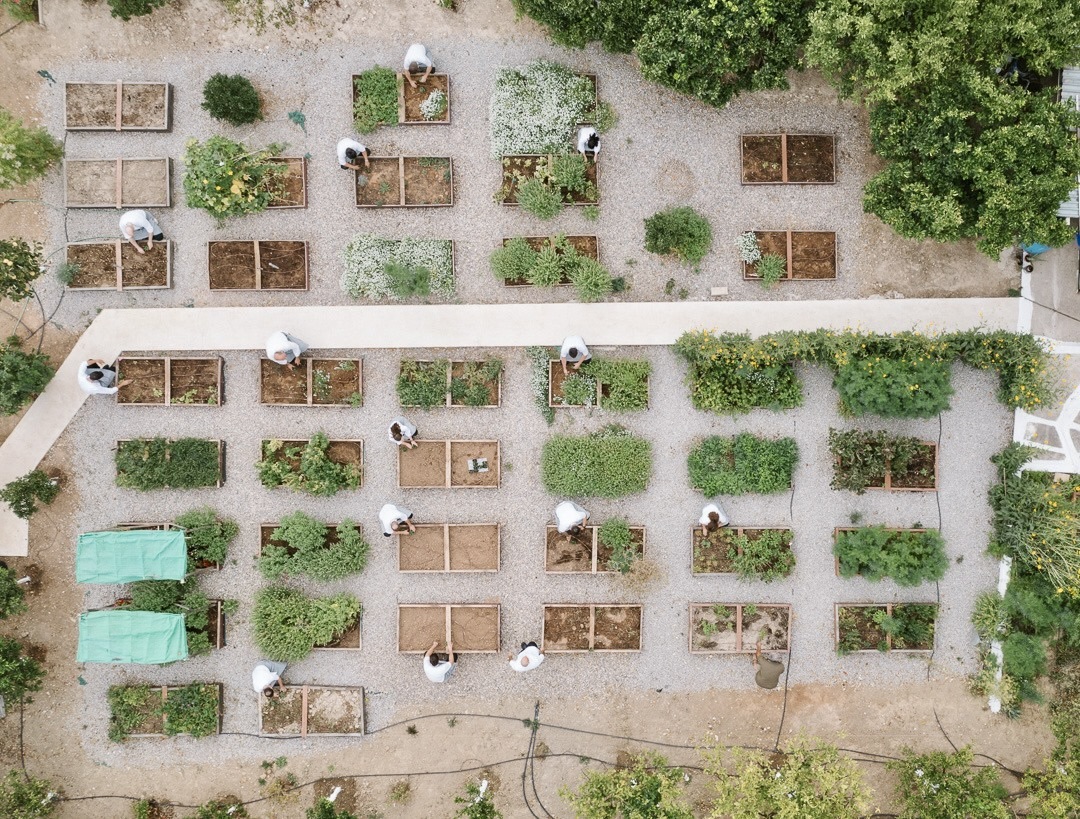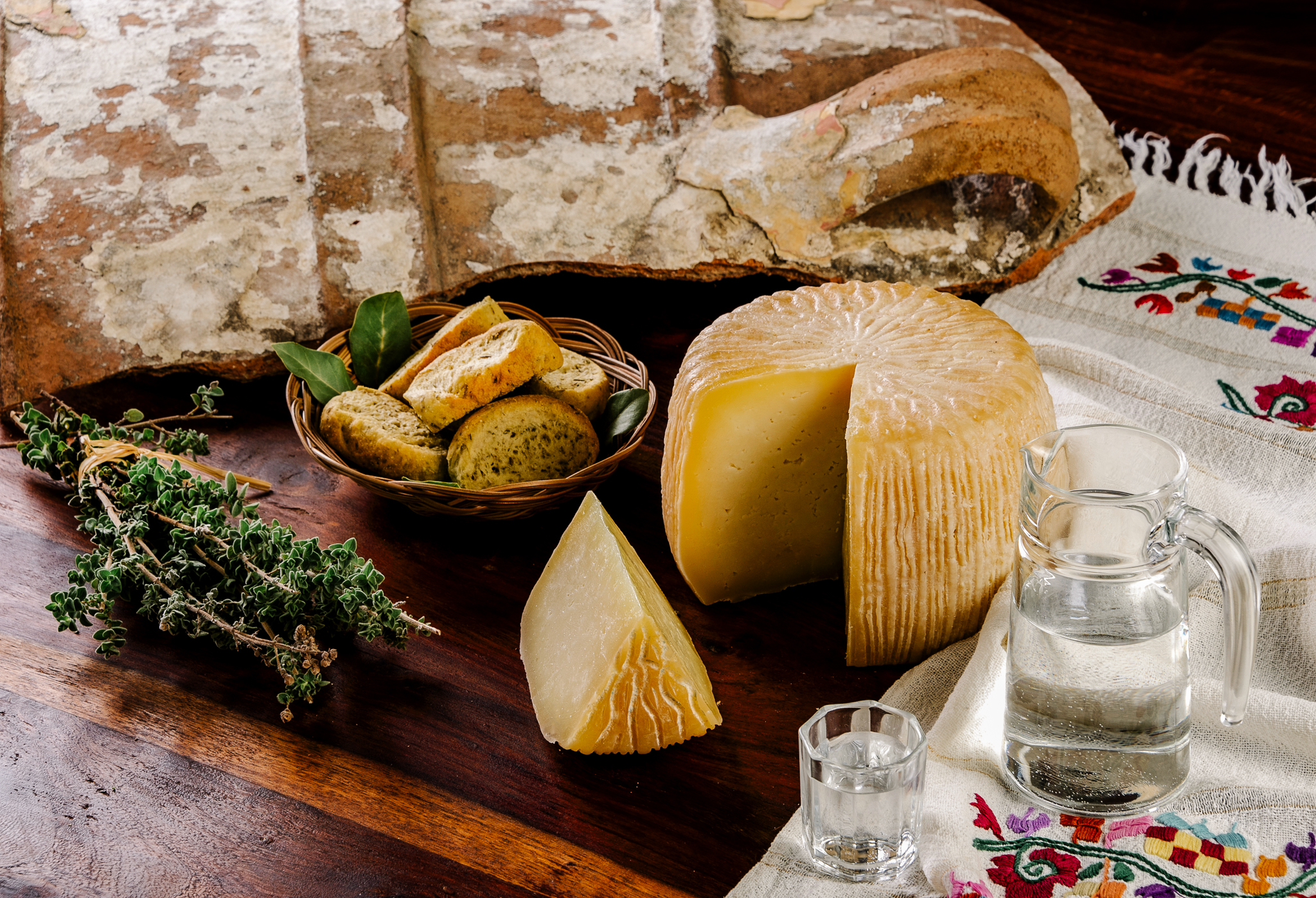“Wilcume!”, so you will be welcomed on the island under the names Kimolis, Kimulo, Kimilos, but also Echinousa or Ophidousa. The Venetians gave it the name Arzantiera or Arzentiera, meaning silver land, and influenced its gastronomic identity like no other conqueror.
Kimolos, a small and barren island, which was burnt to the ground many times in its history by conquerors, does not have many special products to offer. It has, however, an interesting cheese-making tradition, special herbs and spices, aromatic vegetables and the most delicious, as well as famous pies of the Cyclades, with ladenia being the protagonist.
Kimolian wholemeal bread
Kimolian bread is made with wholemeal flour and shaped into small loaves, which do not particularly rise. The two bakeries of the village knead, bake and reserve the loaves for their customers by name on a daily basis until today.
Mastic flavoured rusks
The island’s special and unique rusks are flavoured with the fruits of the mastic tree, namely lentisk seeds, which are harvested at the end of October and during November, and preserved throughout the year. Their sweet aroma complements the ripe Kimolian cheeses particularly well.
The simplest version of ladenia
The Venetians brought with them their love and techniques for dough, bread and open pies. One of these is ladenia of Kimolos, which today, apart from the other Cycladic islands, has also appeared in many Athenian restaurants. It looks like Italian focaccia, adorned with onion, fresh, liquid-free tomato flesh and olive oil. In its simplest version, simply with olive oil and salt, it is baked on the surface of the oven without being placed on a baking tray.
Olive, nettle, raisin
Elenia, a kind of bread with a heart of pitted olives, is usually prepared around the Greek Orthodox Easter. In the old days, they also made tsouknidenia, with spring nettle sprouts instead of olives. For dessert they had stafidenia, the exact same recipe but with raisins this time.
Cheese, fennel and pumpkin
In spring, around the Easter season, there is plenty of rich milk for the preparation of Manoura (Greek, semi-soft, fresh white cheese) and Mizithra (traditional unpasteurised Greek cheese), fennel is everywhere, as well as the sweet aromas of Kimolian honey.
To make the cheese and fennel pies, the light dough is cut into squares, the filling of fresh Manoura, plain or with fennel, is added and the sides are folded in, leaving the centre uncovered. The same dough is used to make pumpkin pies, also called flaounes, with a filling of yellow pumpkin, Manoura cheese and fennel. They cut the dough in round disc shapes, place a spoonful of the filling in the middle of each disk, fold the disks in crescents and bake them. The same filling, without the dough, but with a little flour to thicken the mixture, can be made into a pumpkin pie.
Koulouridi, Platolazana, boulenda
The pasta of Kimolos is no different from that of the other islands. The simplest kind of pasta here is aranto, small balls of flour and water dough cooked fresh in various kinds of soup, even in milk soup. Koulouridi is the long, thin pasta, while the wide pasta, such as commercial tagliatelle, is called platolazana. They used cornmeal to make boulenda; a sort of cream accompanied by tomato sauce and grated Manoura. Today, they still make handmade pasta to accompany the rooster stew or serve it plain with plenty of cheese.
N. Darioti, Th. Tsihlaki, A, Androulidakis, “Of the wind and salt”, Cyclades Chamber publishers, 2015. © Cyclades Chamber



